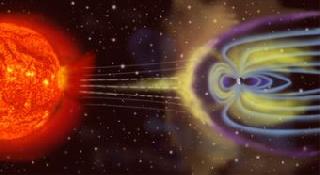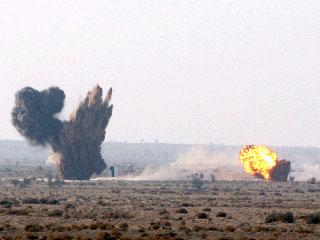
WASHINGTON (PTI): Magnetic storms set off by the Sun could pose a bigger threat than previously thought to the satellites closer to Earth, causing a potentially devastating economic impact on the planet, scientists have warned.
The geomagnetic storms caused by high-energy particles spewed by the Sun could not only affect satellites but also increase radiation hazards for air travellers and astronauts, the researchers said.
In the new study, published in the journal Space Weather, the researchers found that as the Sun approaching the peak of its 11-year cycle it will trigger solar radiation which can energise a belt of high-energy particles that surrounds the Earth more dramatically than previously believed, LiveScience reported.
The study focused on the possible effects of a strong magnetic storm on the Van Allen radiation belts, the dangerous rings of high-energy particles that girdle the Earth.
The belts are split into two distinct zones. The outer belt, which is made up of electrons, reaches from about 15,800 to 31,600 miles (25,500 to 51,000 km) above the surface, while the inner belt, which consists of a mix of electrons and protons, reaches from about 6,400 to 12,800 km above.
It's known the outer belt could become far more intense during geomagnetic storms, such as the storm that supercharged Earth's northern lights display Monday night. However, they have long thought such storms do not affect the inner belt.
Now, computer simulations showed that during a superstorm - which has occurred in the past and is likely to recur in the future - the electrons in the inner belt, too, could become energised. Near-Earth radiation could then remain dramatically more intense for several years afterward.
"The increase in radiation in the inner zone may last for up to a decade and continue damaging satellites for years after a very strong storm," study lead author Yuri Shprits, a space physicist at the University of California, Los Angeles, said.
"It would not destroy all satellites at once," he said.
"However, at least according to our calculations, a very strong storm can increase the radiation dose in the inner zone by a factor of 10, and within a few years we may lose a significant portion of the satellites that traverse the inner zone," Shprits said.
In terms of new strategies that might be needed to protect satellite systems, "it's hard to say," he said. "First of all, we need to estimate risks and estimate cost. If cost is too high, we may want to accept the risks and start getting ready to replenish the fleet in the case of such event."
"There are a number of rather expensive strategies that can be used to mitigate the risk, including redundancy in electronics and increased shielding," he added. "Zero risk means infinite cost."
Two missions to study the radiation belts are planned for 2012.
NASA's Radiation Belt Storm Probe will observe radiation belts in the equatorial plane, while Moscow State University's LOMONOSOV mission, with UCLA-built instruments on board, will observe radiation belts at low altitudes.
 Previous Article
Previous Article Next Article
Next Article













The Indian Air Force, in its flight trials evaluation report submitted before the Defence Ministry l..
view articleAn insight into the Medium Multi-Role Combat Aircraft competition...
view articleSky enthusiasts can now spot the International Space Station (ISS) commanded by Indian-American astr..
view article